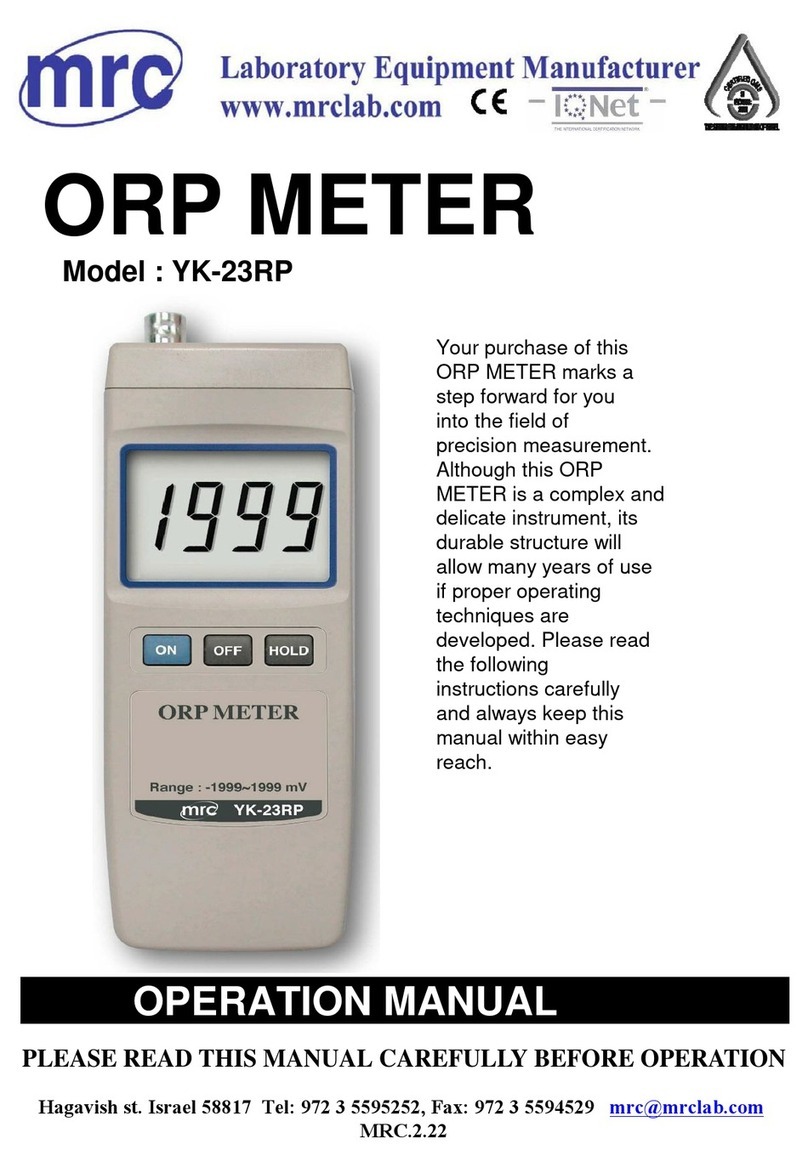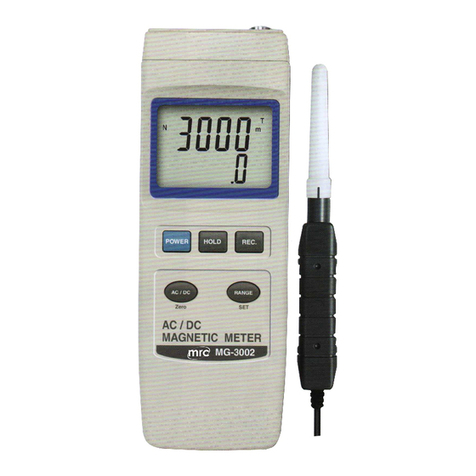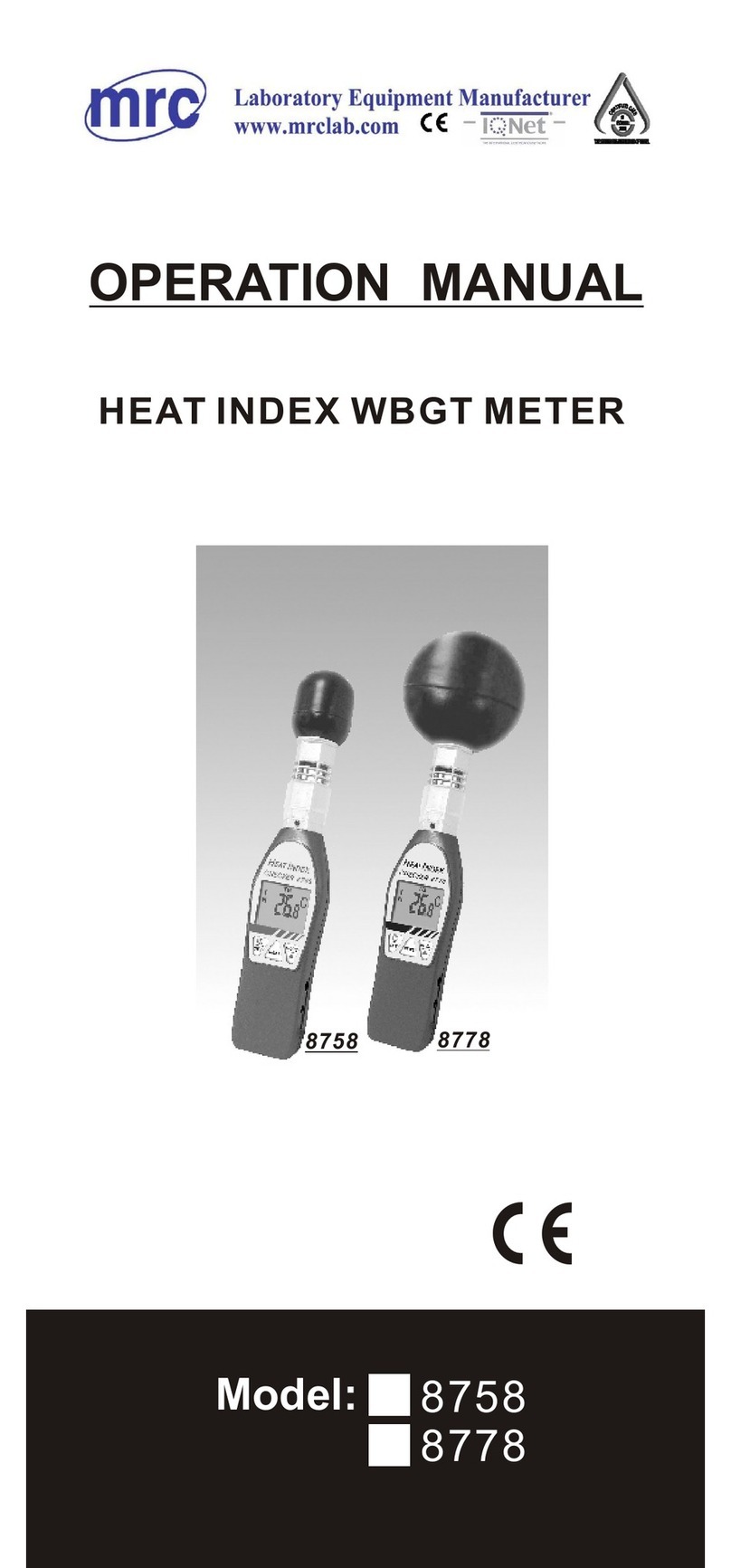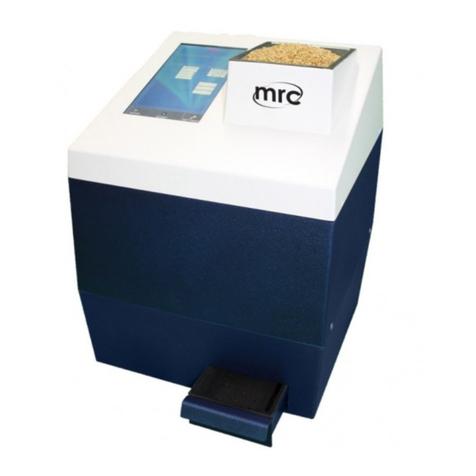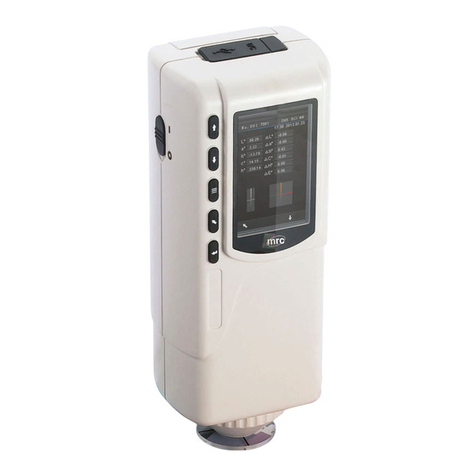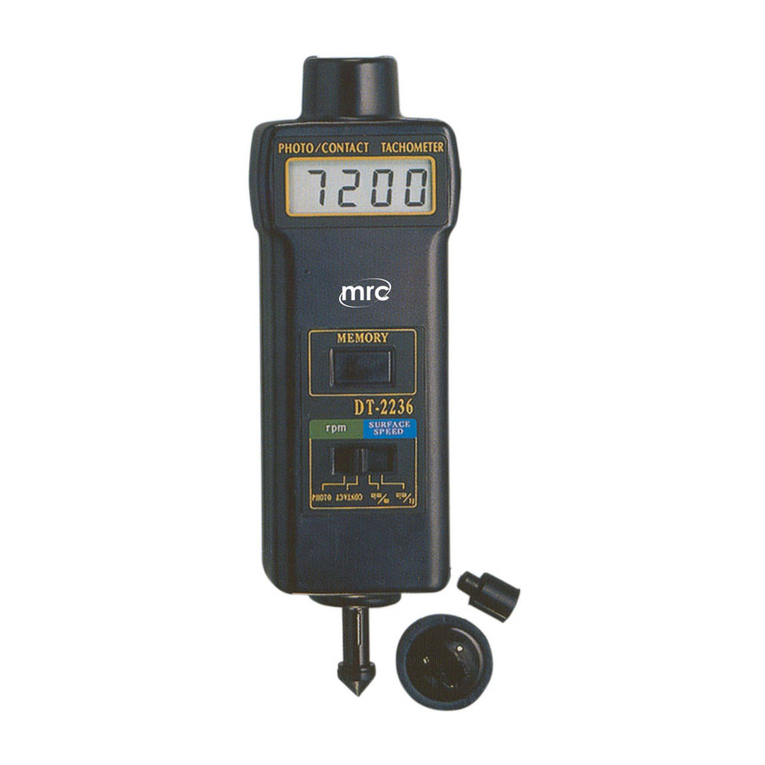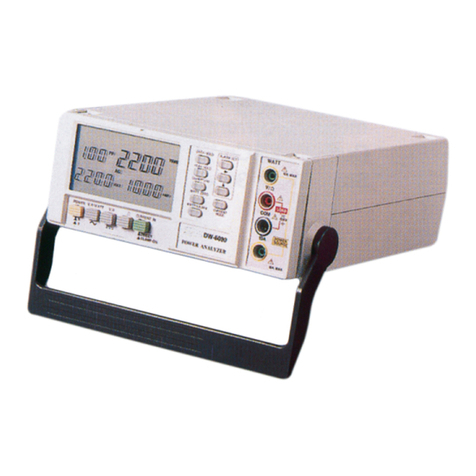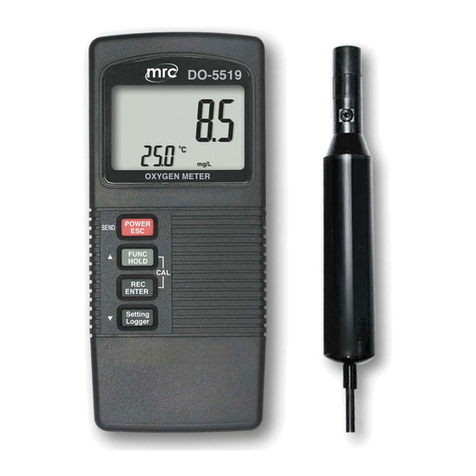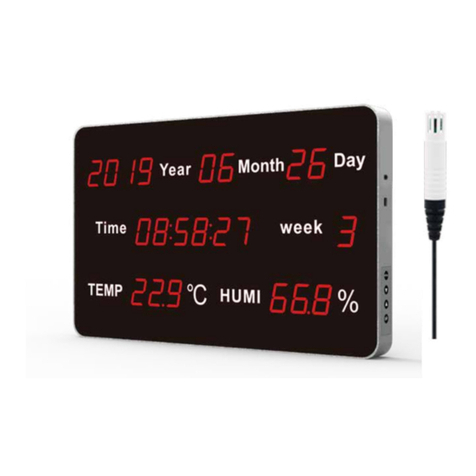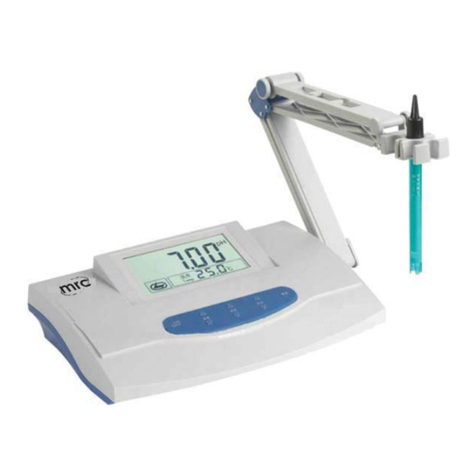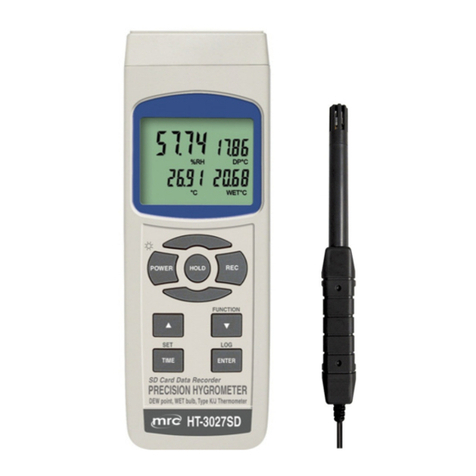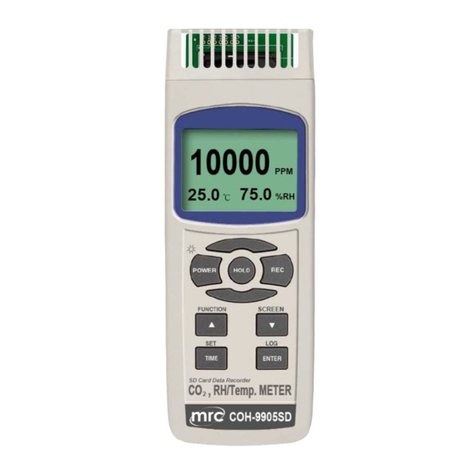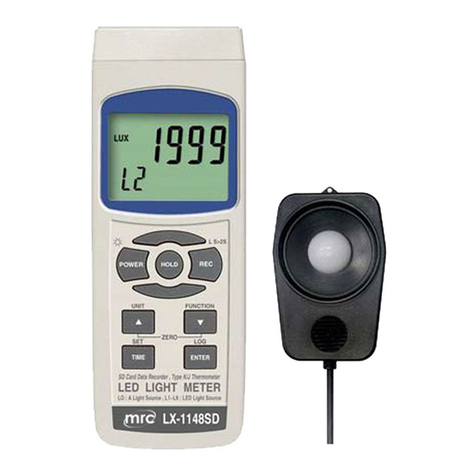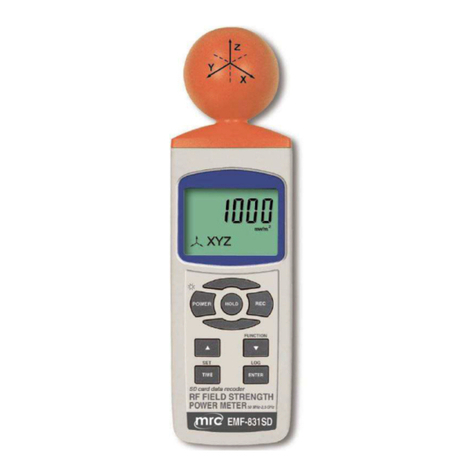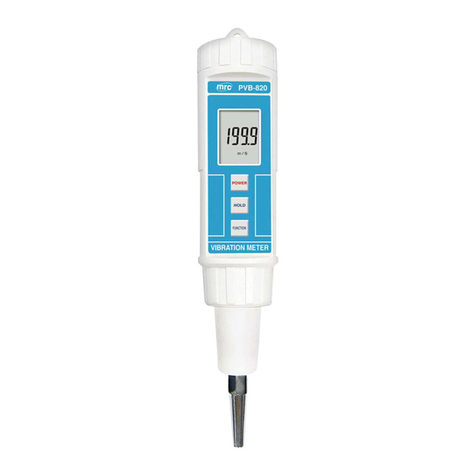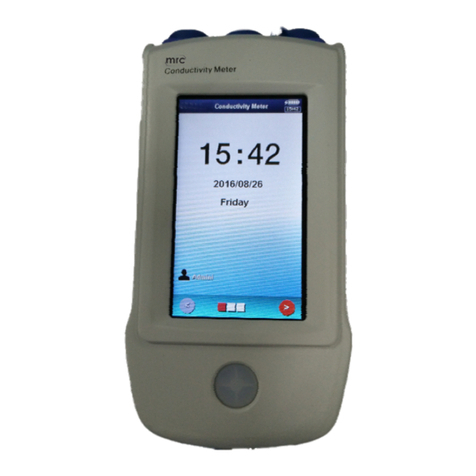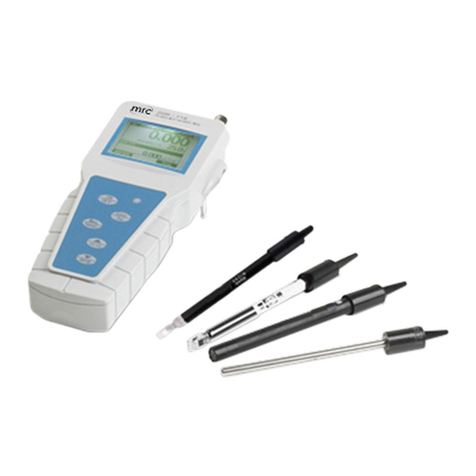
TABLE OF CONTENTS
1. GENERAL DESCRIPTIONS....................................................... 1
2. FEATURES.............................................................................1
3. SPECIFICATIONS...................................................................
2
4. FRONT PANEL DESCRIPTION..................................................4
4-1 Display.......................................................................... 4
4-2 Power Off/On button......................................................
4
4-3 Data Hold button............................................................4
4-4 / button..................................................................℃℉ 4
4-5 Memory Record button...................................................
4
4-6 Memory Call button........................................................ 4
4-7 Factor Ad
. button..........................................................
4
4-8 Zero button...................................................................
4
4-9 % Salt button................................................................ 4
4-10 DO/O2 Selector.............................................................. 4
4-11 O2 Cal. button................................................................4
4-12 MT. ( Mountain Hei
ht ) button.......................................
4
4-13 Battery Compartment/Cover............................................4
4-14 Probe Input Socket ........................................................4
4-15 Oxy
en Probe handle......................................................4
4-16 Temperature sensor........................................................4
4-17 Probe head with diaphra
m set.......................................
4
4-18 Protection cover for probe head.......................................4
4-19 Oxy
en probe plu
.........................................................
4
5. MEASURING PROCEDURE.......................................................5
5-1 Calibration................................................................... 5
5-2 Dissolved Oxygen ( DO) measurement ..............................6
5-3 Oxy
en in Air ( O2) measurement ....................................
8
5-4 Temperature measurement ..............................................8
6. AUTO POWER OFF DISABLE...................................................
11
7. PROBE MAINTENANCE...........................................................
11
8. BATTERY REPLACEMENT....................................................... 14













